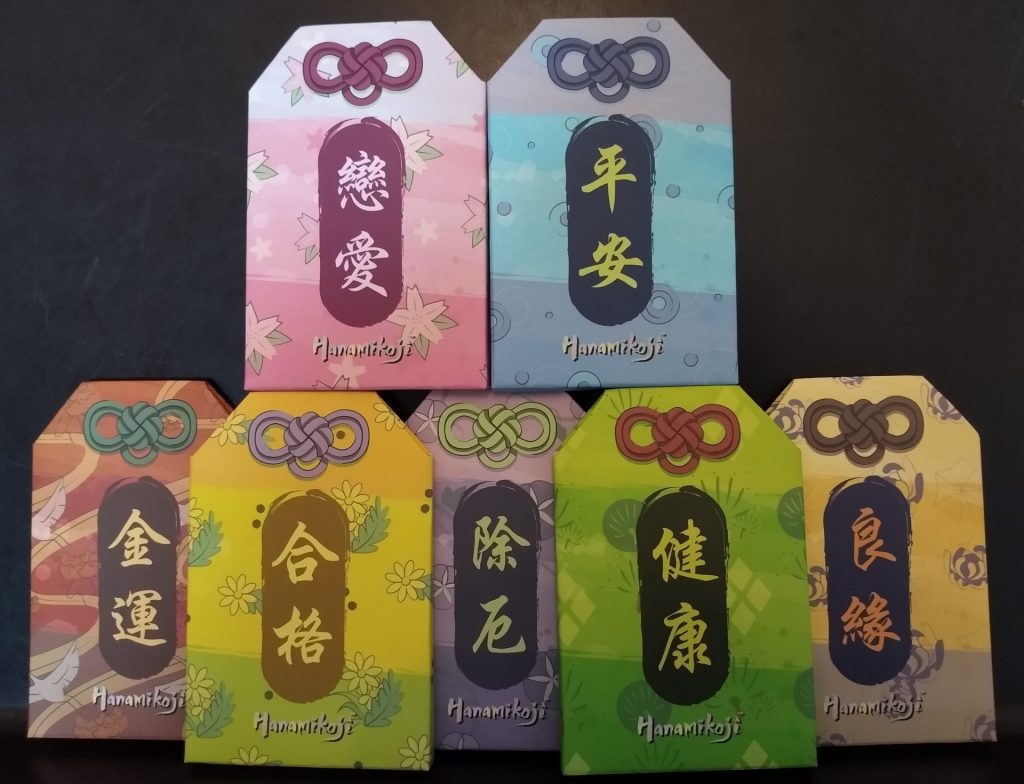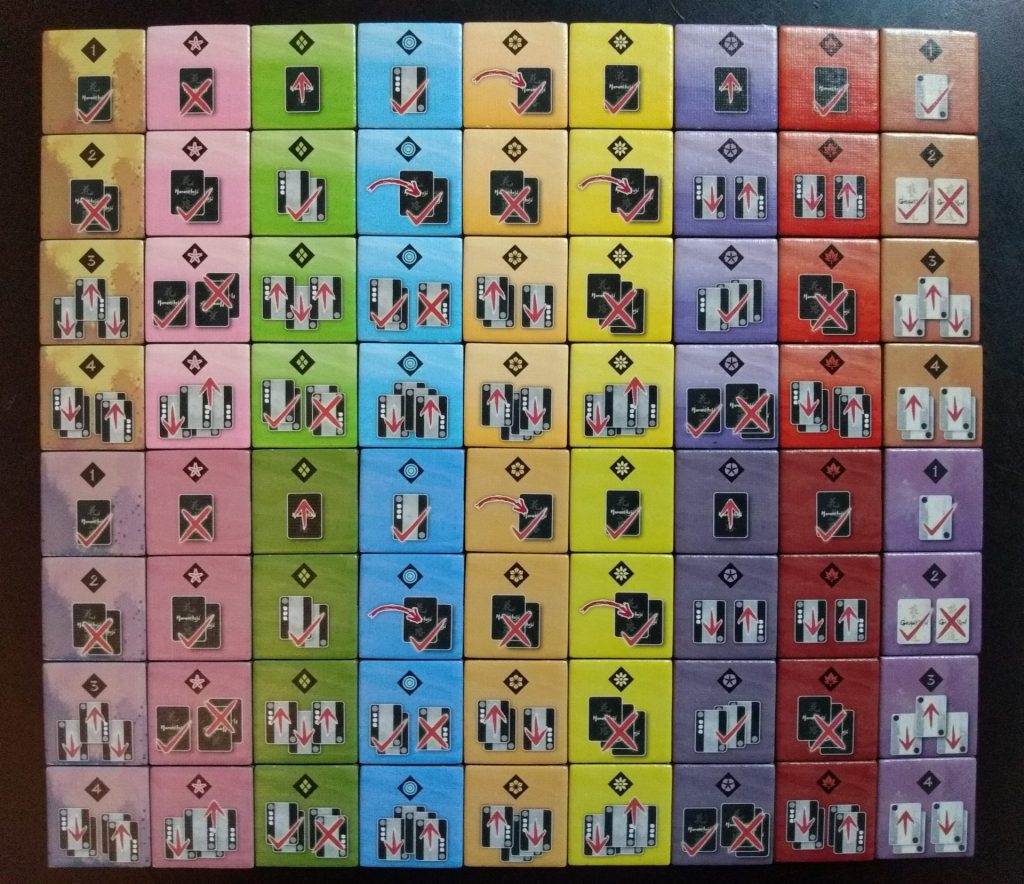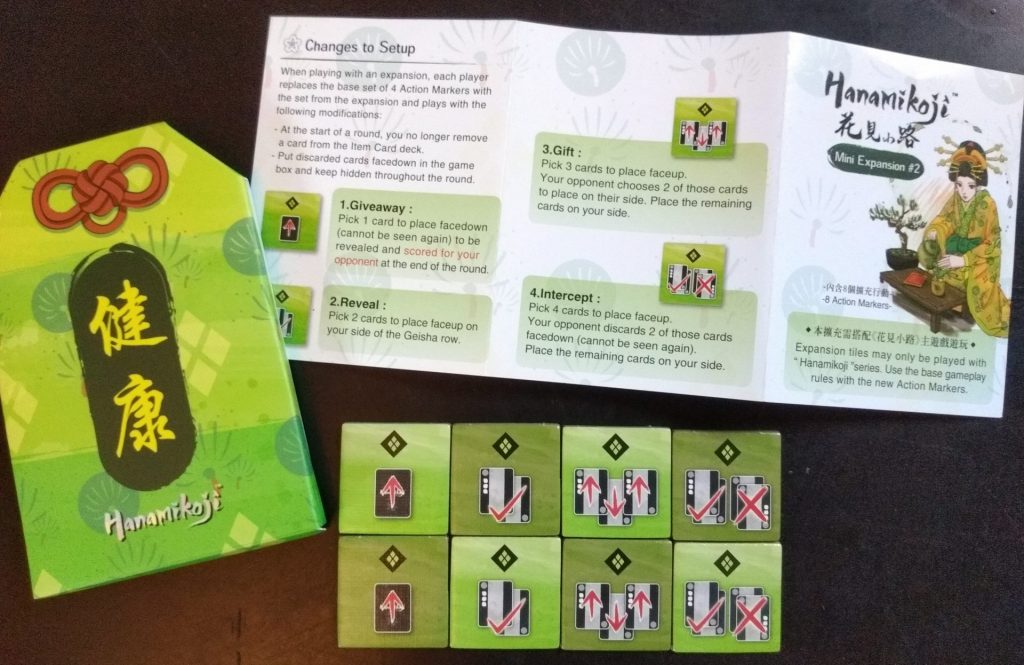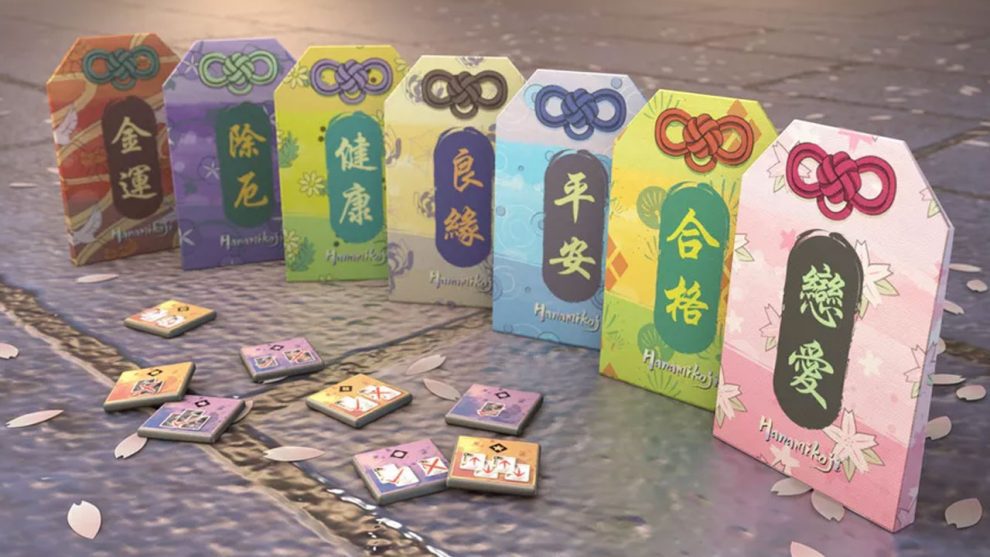Disclosure: Meeple Mountain received a free copy of this product in exchange for an honest, unbiased review. This review is not intended to be an endorsement.
How do you expand a game that was released 8 years ago and has been quietly building a reputation as one of the most interesting two-player games around?
If you’re publisher EmperorS4 the answer is to adopt a go-big-or-go-home mentality by simultaneously releasing a new game in the series (Hanamikoji: Geisha’s Road) and 7 new expansions that are all compatible with both the original game Hanamikoji and it’s new-born sequel. It’s an ambitious approach but does it pay off? Read on to find out!
This is a review of the 7 new expansions. If you aren’t familiar with the two base games that the expansions are compatible with then check out our reviews of Hanamikoji and Hanamikoji: Geisha’s Road.
Seven Years in Kyoto
Releasing nothing for years and then 7 expansions all at once – what are they taking over at EmperorS4 and can I have some?
In truth they’re actually ‘mini-expansions’, but don’t be fooled by EmperorS4’s modesty. If you recall how the base games are utterly defined by the 4 action tiles then in a moment you’ll understand that the only thing mini about these expansions are their components.

What are these new expansions then? Why, nothing much… just 7 new sets of action tiles featuring all new actions and familiar actions placed in novel contexts. Fans of Hanamikoji will at this point find their hearts fluttering with trepidation and excitement: the original 4 actions are so precisely balanced, so exacting in their requirements of the players that any changes could be fascinating or disastrous.
And, honestly, there’s a little bit of both here.
The Magnificent Seven Geisha
So what’s new?
Loads!
For a start there are 5 brand new action types not previously found in Hanamikoji. Finally you can place face-up cards directly on your side of the geisha row with the ‘Reveal’ action. You can also ‘Giveaway’ a facedown card to your opponent for endgame scoring – all they’ll know is that it’s probably useless. Meanwhile ‘Transmit’ and ‘Intercept’ let your opponent discard cards from a selection you present them with, either at random (cards facedown) or purposefully (cards face-up).
‘Referral’ is the most polarising addition, letting you discard cards to the bottom of the deck and set aside the same number of cards from the top of the deck facedown for scoring at the end. It sounds too random until you realise that you can seed the cards being picked up in the final turns of a round, limiting your opponent’s options or reserving a useful card for yourself.

Of the 28 action tiles found across the expansions, only 4 are direct copies of the original actions. The remaining 24 tiles are variations on the original and new actions. Take the ‘Gift’ action for example. In both base games you present your opponent with 3 face-up cards; they pick 1 and leave you with 2. Variations of ‘Gift’ play with the number of cards shown (2-4) and the number of cards taken. For a ‘Gift’ action with 4 cards your opponent might keep 1, 2 or 3 cards. These may seem like inconsequential changes but the difference in terms of when and how you play each action is profound.
The result is that every expansion plays slightly differently. Some revel in hidden information, with few cards revealed before the end of a round, whereas others feel more open. You may have more control over the cards you play or cede more control to your opponent. Tactics such as card counting or preventing your opponent from getting certain cards become more or less important, and even the shadow of luck seems to darken or fade.
The Seventh Seal of Approval
Crucially, the core game loops remain the same. All the tension and tough decisions of the originals are present and correct. The games still turn you on your head with a single decision; they still have you feeling like a genius one moment and a fool the next. You’re still navigating the slippery route to favour, but how you steer through those paths is different, full of fresh new approaches to explore and exploit.
The expansions provide an opportunity to rediscover the joys of those first few games you played, resetting your experience levels and allowing you to divine new approaches and strategies. Those light bulb moments of realisation you had discovering the twisting secrets of the original games strobe in your brain with each new expansion.
Together all 7 expansions are a fantastic package, giving you so much to explore and discover and making the games seem fresh. If the base games are a nice piece of steak (or tofu steak if you have beef with beef) then the expansions swap out the sauces that are served with it: peppercorn, black bean, béarnaise, teriyaki, shallot and red wine, and so on. The meal is essentially the same and just as delicious but the flavour and aftertaste are very different.

Individually it’s more of a mixed bag, with some expansions as strong as the originals and others less so. I have a suspicion that the reason that EmperorS4 games are releasing 7 expansions at once is because there are 7 geisha in the original game and 7 is an important number in Japan, the games’ setting. The result is that whilst some of the expansions are brilliant, a couple are a little more awkward and one feels like it’s making up the numbers (#7).
One of the joys of the base games is that you can successfully play the 4 actions in any order. But with a couple of expansions, action order feels a little more prescribed, particularly #4 where my opponent and I repeatedly tried to win Hanamikoji using the actions in different orders and came to the conclusion that certain actions were considerably stronger or weaker played at the start or end. I’m also not a huge fan of new action ‘Giveaway’. Foisting a rubbish card on your opponent is fun to begin with but once you’ve done that a couple of times it becomes a bit predictable. There’s no decision about how you use it, just whether you get the right cards or not.
In terms of practicalities, the expansions are ridiculously easy to swap out and the rules take a few scant seconds to read and internalise (although ‘Intercept’ in expansion 2 could be a little clearer, the rules text and tile imagery disagreeing whether the 4 cards should be presented as 2 pairs or not). If you intend to play a few games with each expansion then you should also sleeve your cards as they’ll definitely experience some wearing.

Aesthetically, the action tiles are often held up by critics as a blip on an otherwise staggeringly beautiful game. Personally I’ve never felt this was an issue that needed fixing and the expansions haven’t really tried. As if to make up for this though, the packaging is wonderful. They’re modelled on omamori, Japanese amulets or good luck tokens sold at Shinto shrines and Buddhist temples, and they are, like the charms they’re based on, gorgeous and surprisingly tactile. In a nice touch, each expansion also has a title that echoes the prayers found inside real omamori, such as ‘to be in love’, ‘health’ and ‘economic prosperity’ (although if there’s a link between the names and the way the expansions play then I’ve yet to spot it).
But all this praise and criticism needs to be framed around two important caveats:
Firstly, the expansions highlight different areas of the base games so your opinion of each will depend on what you most enjoy about the original games and your preferred playstyle.
Secondly, the expansions tweak the experience of each base game in slightly different ways so expansions you bounce off whilst playing Hanamikoji might sing for you in Geisha’s Road and vice versa.
As a result I can’t, in all conscience, say which expansions would be best for you. My opponent and I rarely agreed on them; numbers 4 and 7 that I mentioned above are the only ones we came to the same conclusion about. What we did agree on was that the experience of playing through all 7 of them was absolutely fascinating, very enjoyable and well worth trying out if you like either or both of the base games. But you don’t even need all 7, having just 1 or 2 expansions is an easy way to freshen up the base games and all of them are interesting, with some more so than others.
Now, if you’ll excuse me I’m going to go write ‘steak’ on my shopping list.
Want to read about the base games these 7 mini-expansions expand? Check out our reviews of Hanamikoji and Geisha’s Road.











Add Comment